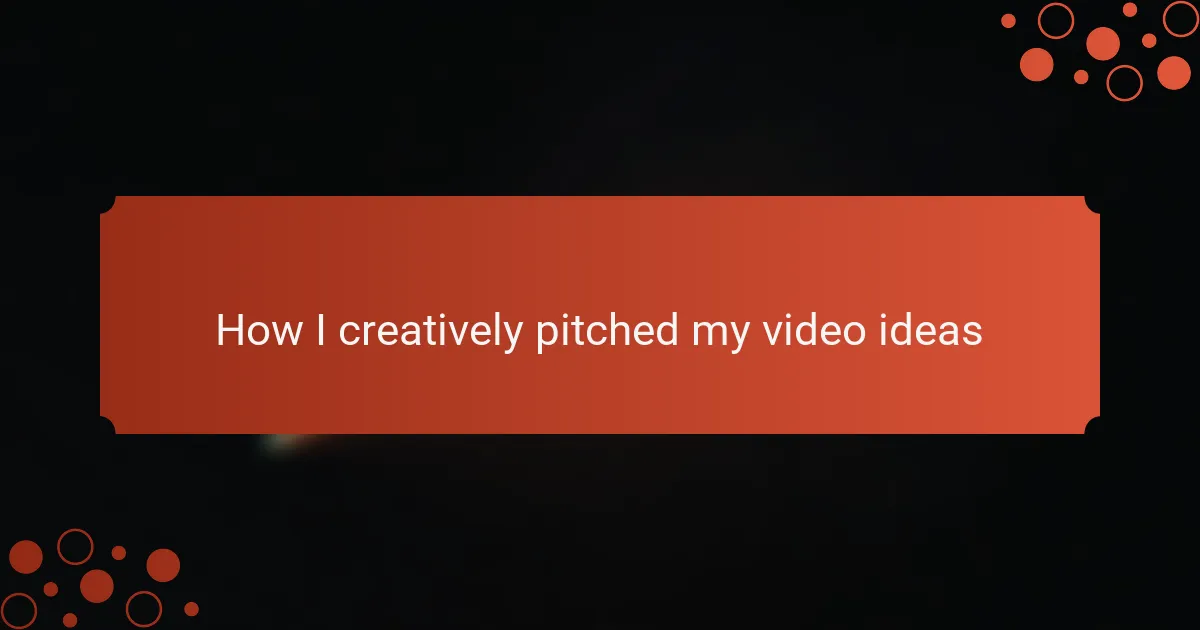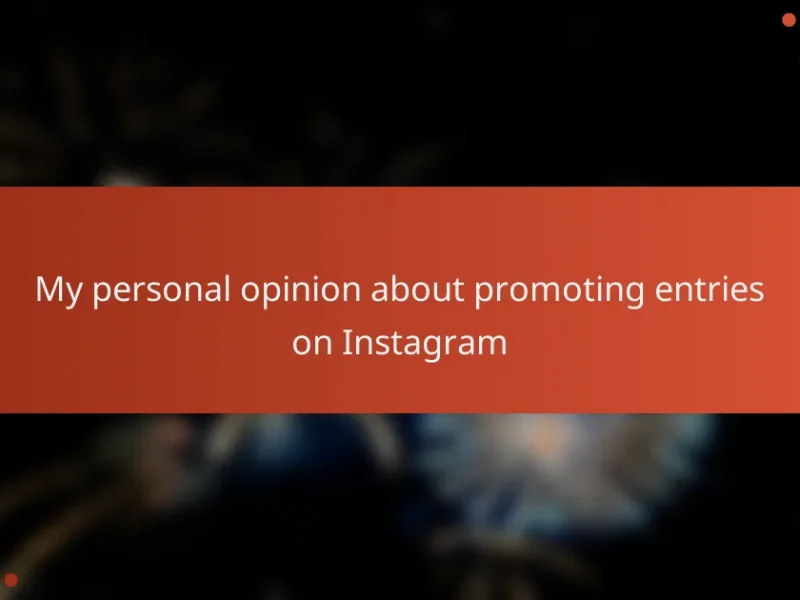Key takeaways
- Understand contest rules, audience, and submission deadlines to avoid unnecessary stress and ensure your entry aligns with expectations.
- Crafting a creative pitch is crucial; focus on storytelling and emotional connection to make your idea stand out.
- Plan your video ideas thoroughly, clarify your message, and use visual aids to organize concepts effectively and avoid last-minute chaos.
- Pay attention to details and be persistent; refining your approach based on feedback can significantly increase your chances of winning.
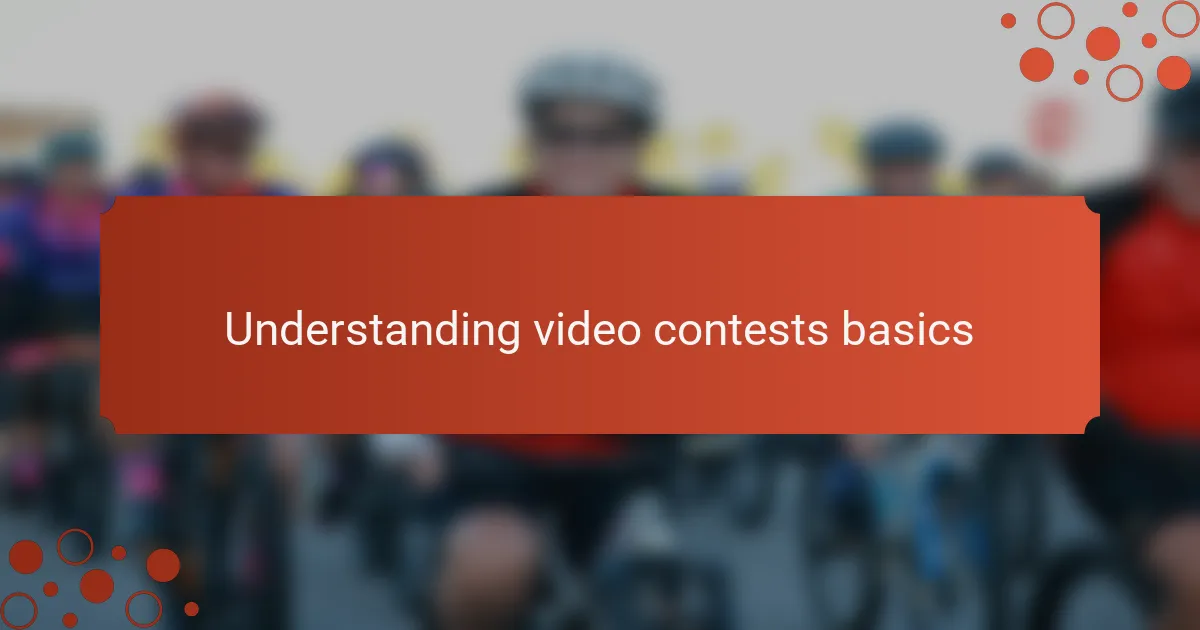
Understanding video contests basics
Video contests often seem straightforward—submit your best clip and wait for the results—but there’s more beneath the surface. From my experience, understanding the rules and judging criteria early on can save you a lot of frustration and wasted effort. Have you ever rushed a project, only to realize later that you missed a key requirement? I’ve been there, and it taught me to slow down and really study the contest basics before diving in.
Knowing the target audience is another crucial aspect that I’ve learned the hard way. Different contests attract very different viewers and judges, so what works for one contest might flop in another. For example, a humorous approach might win laughs—but would it resonate in a contest focused on emotional storytelling? Thinking about the viewers’ perspective helped me tailor my pitches more creatively and effectively.
Lastly, the timeline and submission process can often be overlooked, but they’re essential to master. I remember submitting a video just minutes before the deadline, fighting with unstable internet and a ticking clock—definitely a nerve-wracking moment. Planning ahead and understanding these logistical basics gave me the confidence to focus on creativity without the stress of technical glitches. Don’t underestimate these details; they can be the difference between making it to the final round or missing out altogether.
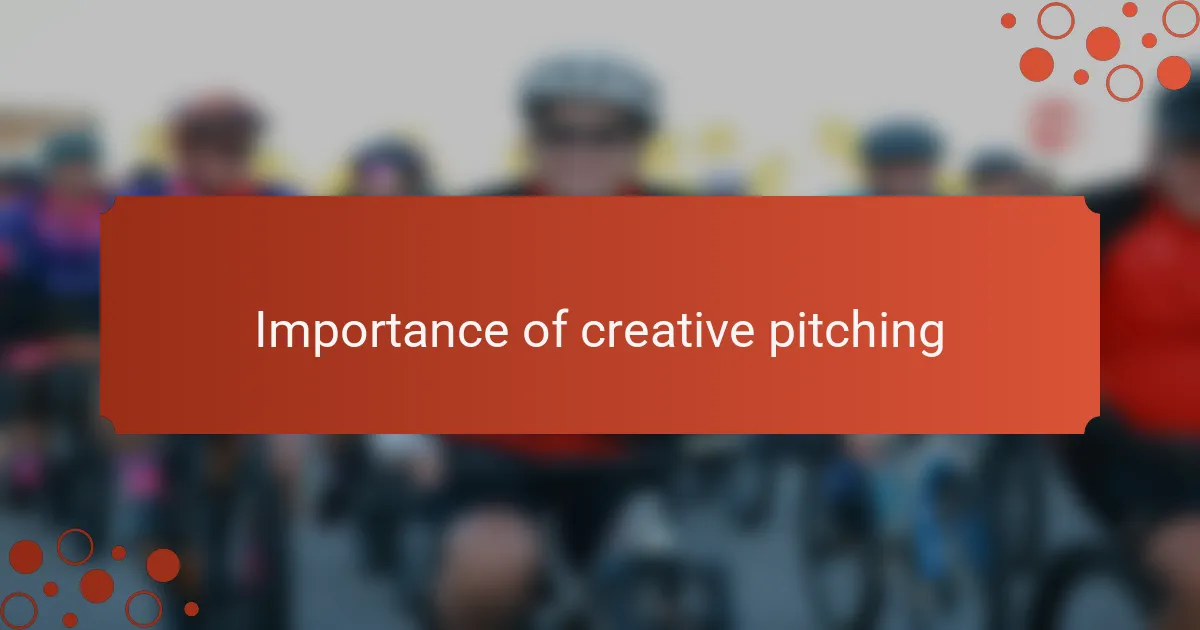
Importance of creative pitching
Creative pitching is the heartbeat of standing out in any video contest. I’ve learned that simply having a good idea isn’t enough; how you present it can spark interest or lose it instantly. Have you ever noticed how the same idea can seem dull or exciting depending on the way it’s introduced? That’s the power of a creative pitch.
When I started pitching my ideas, I realized that creativity isn’t just about flashy graphics or clever words—it’s about making a connection. I remember once pitching a simple story concept differently by focusing on its emotional core, and suddenly the judges were leaning in, genuinely intrigued. That moment taught me that a well-crafted pitch can turn an average idea into something memorable.
Why is this so important? Because creative pitching sets the stage for your entire video’s success. It grabs attention in a flood of entries and shows that you’ve thought beyond just the visuals—you’ve considered the impact. Without that spark, even the best footage can get lost in the crowd.
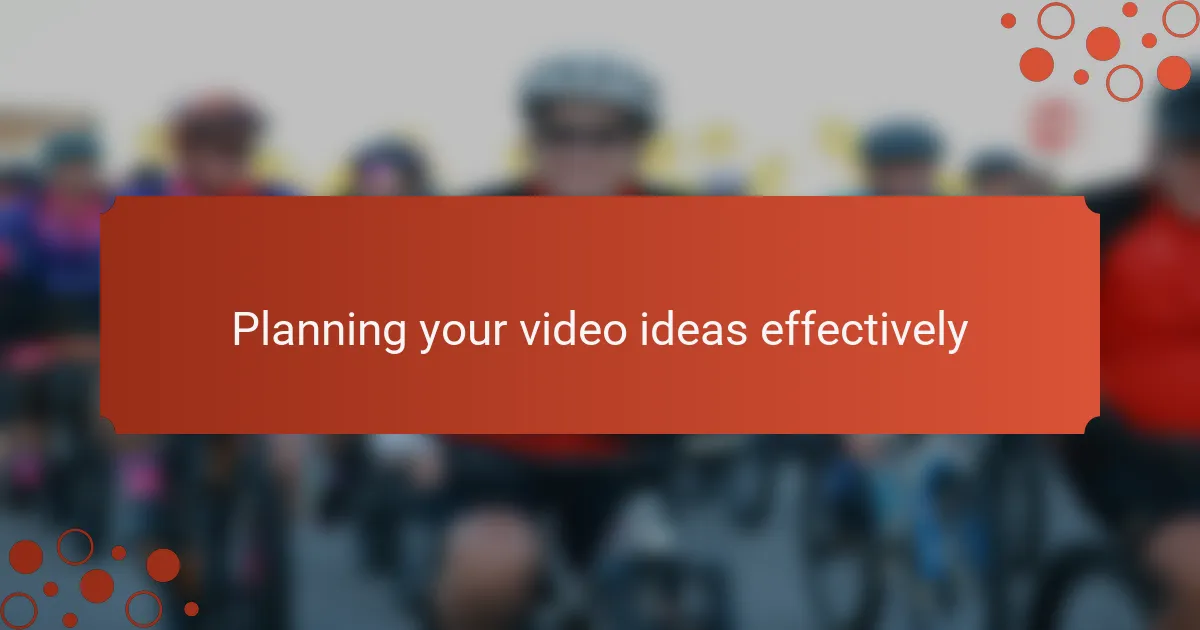
Planning your video ideas effectively
Planning your video ideas effectively starts with clarifying your core message. I’ve found that when I spend time nailing down exactly what I want to say, the rest flows much easier. Have you ever tried to start filming with just a vague idea? It’s frustrating and often leads to wasted shots and extra editing hours.
Next, I focus on organizing my concepts visually—storyboards or simple sketches work wonders. This step helped me see gaps or awkward transitions before committing to production. One time, I skipped this and ended up scrambling on shoot day, which was stressful and could have been avoided with a little upfront planning.
Finally, setting realistic deadlines keeps the creative energy alive without burnout. I’ve learned the hard way that giving myself too little time forces compromises in storytelling or quality. Have you noticed how pressure sometimes kills ideas instead of inspiring them? Balancing ambition with practical timing is key to keeping your vision intact and your process enjoyable.
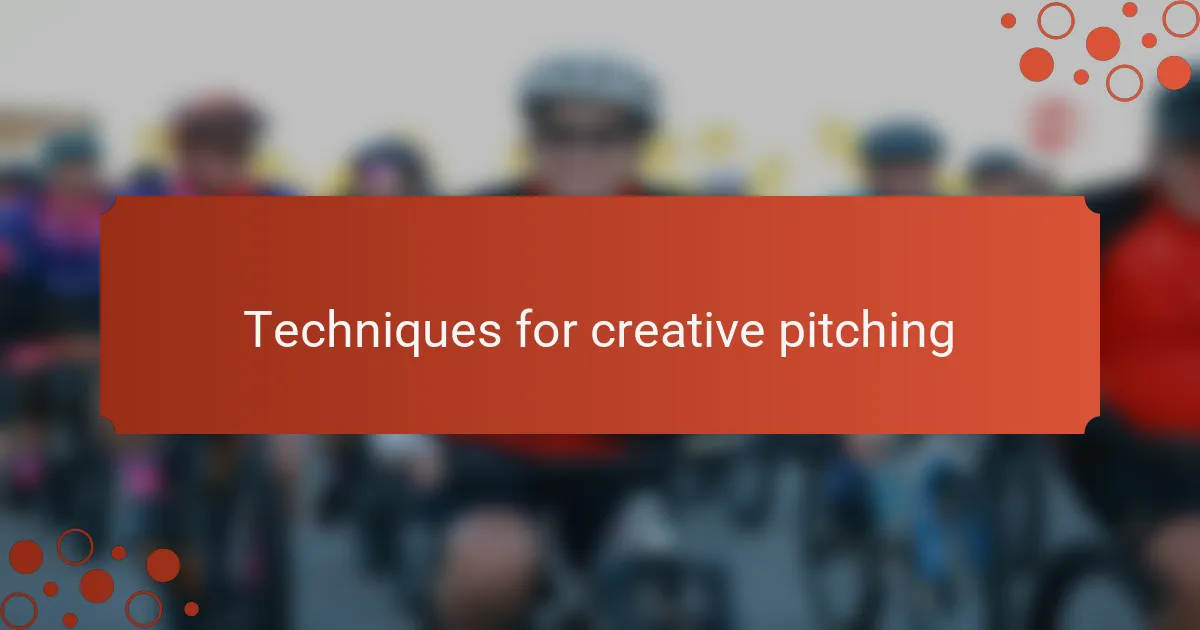
Techniques for creative pitching
When I first started pitching my video ideas, I learned that creativity in the pitch doesn’t just mean flashy effects or buzzwords—it’s about telling a compelling story in a way that makes the listener feel involved. Have you ever tried explaining your idea only to see eyes glaze over? I have, and it pushed me to experiment with vivid analogies and personal stories that made my pitches stick.
Another technique that worked well for me was focusing on the “why” behind my idea rather than just the “what.” I found that when I explained why the video mattered—what emotional or social impact it could have—judges and collaborators became more engaged. This shift changed my pitches from dry outlines to passionate conversations that felt real and urgent.
I also realized that keeping pitches concise and visually supported made a huge difference. Instead of long-winded explanations, I used quick sketches, mood boards, or short clips to bring ideas alive. This approach not only clarified my vision but made the pitch sessions more dynamic and interactive, and honestly, a lot more fun. Have you tried showing instead of just telling? It’s a game-changer.
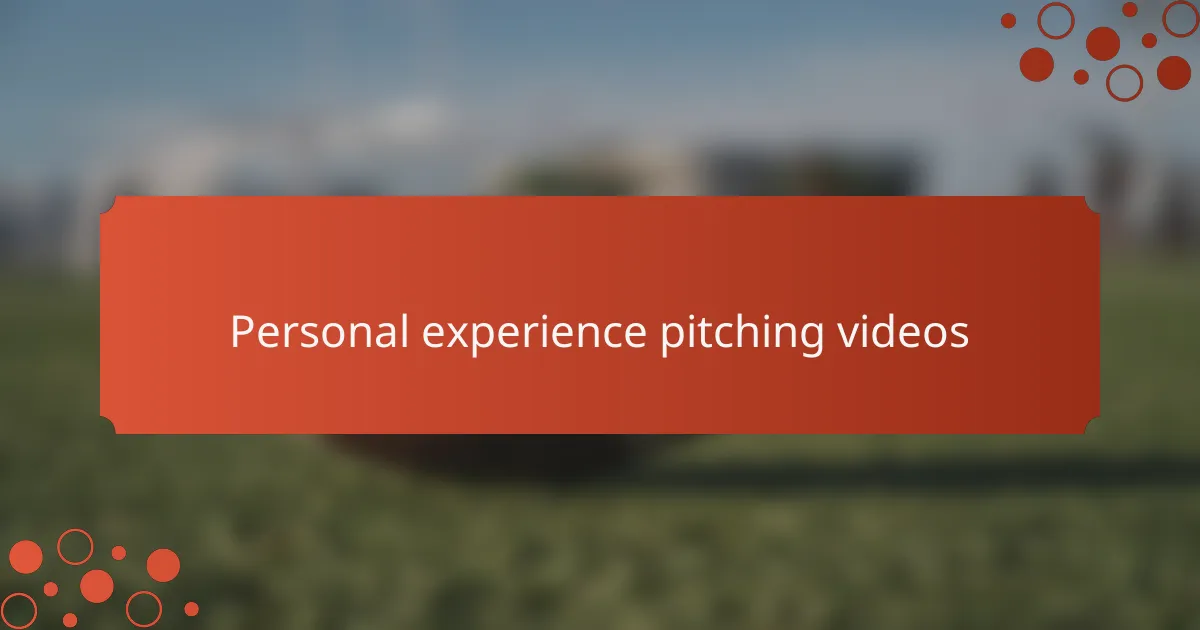
Personal experience pitching videos
When I first pitched my video ideas, I underestimated the power of storytelling. I’d simply outline the concept and expect excitement to spark. But one time, after watching a colleague’s animated pitch full of passion and detail, I realized that facts alone don’t sell—you have to make people feel your vision.
I remember a moment when nerves almost tripped me up during a pitch meeting. Instead of panicking, I shifted focus and shared why the message mattered to me personally. That genuine emotion seemed to break through the usual formality and get everyone on board. Have you ever noticed how authenticity can turn the tide in your favor?
Over time, I developed a habit of rehearsing my pitch like a mini performance, tweaking the flow until it felt natural yet compelling. Visual aids became my secret weapon—quick sketches or mood boards helped others see what I was imagining before I even pressed record. That shift transformed my pitches from awkward talks into memorable conversations that opened doors.

Tips for winning video contests
Winning video contests often hinges on knowing how to connect with the judges and audience on a deeper level. I’ve found that understanding what moves them—whether it’s humor, emotion, or originality—makes a huge difference. Have you ever tailored a project after realizing what really resonates? That insight gave me a clear advantage in crafting entries that felt both authentic and impactful.
Another tip I swear by is paying close attention to the smallest details. One contest I entered lost me points because I overlooked a simple formatting rule. It was frustrating, but it taught me to double-check every guideline meticulously. Trust me, nailing the technical aspects can be just as important as creativity when it comes to winning.
Lastly, don’t underestimate the power of timing and persistence. Some of my winning videos didn’t come from the first try but from revisiting feedback and refining my approach. Have you ever kept pushing after an initial setback? That persistence often turns a good idea into a contest-winning masterpiece.
